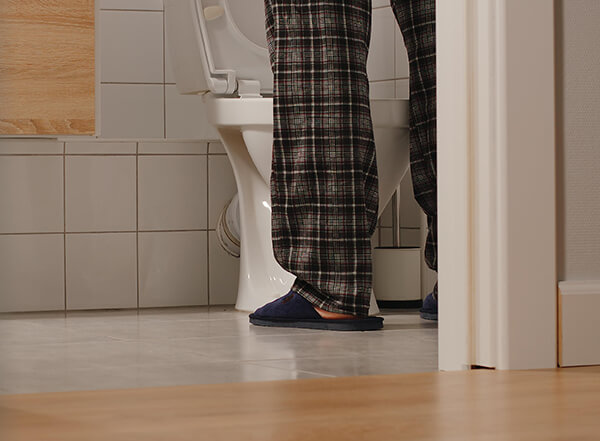All over the country, an estimated 15 million men wake up in the middle of the night to pee because of an enlarged prostate. Many of these men have tried prescriptions but only marginal improvement, if any at all.
Waking up multiple times a night to pee isn’t a solution either and can take a toll on your health in general. Long-term interrupted sleep can cause a variety of other issues, such as hypertension, dyslipidemia, cardiovascular disease, weight-related issues, metabolic syndrome, type 2 diabetes mellitus, and colorectal cancer.
If you’ve tried meds and they just aren’t working, there are other ways to treat an enlarged prostate, or benign prostatic hyperplasia (BPH), that spare you the side effects of medications or long hospital stays.
Knowing what’s right for you requires a little know-how. To begin: How do you know if your prostate is enlarged?
This is Your Prostate on Hormones
Let’s start with the prostate’s position in the body, just beneath the bladder and surrounding the urethra, which carries urine from the bladder. Basically, the prostate “hugs” the urethra, lightly.
However, as men age, the cells in their prostates multiply due to a sex hormone called dihydrotestosterone. When the prostate tissue expands so much that it presses against the urethra (bear hug), it is considered enlarged. This is why men with BPH typically have trouble starting to pee and have a weak stream, even though they feel they have to go frequently, especially at night.
And it likely will occur with you. An estimated 50% of men between the ages of 51 and 60 have BPH; among men aged 60 to 69, it’s 70%, and for men over 70, it’s 80%.
The Leading BPH Treatments, Tailored to Meet a Spectrum of Needs
BPH is among the leading reasons men visit The Urology Group. We’re continuously researching new treatments so each patient has a choice that suits him. Our first approach typically involves lifestyle changes (such as exercise and a healthier diet) followed by medications.
Many men, however, require something more. Among your options:
- The UroLift® System (prostatic urethral lift) – This outpatient procedure is an incision-free alternative to typical tissue removal because it moves, rather than removes, the tissue obstructing the urethra. It does this through two small implants, inserted in each side of the prostate, that lift and hold the tissue away from the urethra.
- GreenLight™ Laser Therapy – A popular alternative to TURP, the GreenLight approach vaporizes the prostate tissue via a small scope the surgeon inserts into your urethra. Most patients experience rapid symptom relief within 24 hours.
- Aquablation therapy – In this minimally invasive approach, the physician removes excess tissue using powerful, heat-free water jets that are delivered through the urethra with the help of robotic technology.
- Holmium laser enucleation of the prostate (HoLEP) – This treatment uses laser technology to remove large amounts of tissue at once, essentially coring (enucleating) the prostate. A second instrument then cuts the tissue into small pieces that can easily be removed.
- Robotic (simple) prostatectomy – This surgery is similar to a HoLEP, but requires accessing the prostate through an incision and then using robotic-aided technology to remove the tissue. Robotic surgery may be recommended for men with severely enlarged prostates.
- Transurethral resection of prostate (TURP) – Advised for men with moderate to severe urinary problems, TURP is a procedure in which excess prostate tissue is trimmed away with an electric wire loop. The surgery is performed using a slim, tube-like instrument (resectoscope) that is threaded through the urethra to the prostate.
Do You Still Have Questions? We’re Here
There is no one-size-fits-all treatment for BPH. If you are among the 15 million men experiencing symptoms, it might be time to schedule a visit with a urologist. Not only can you rule out prostate cancer and prevent other conditions from developing, but you can also return to a normal night’s sleep.
If you’re concerned about your prostate health, or believe you are experiencing signs of an enlarged prostate or prostate cancer, contact us. You can request an appointment online, easily, today.

